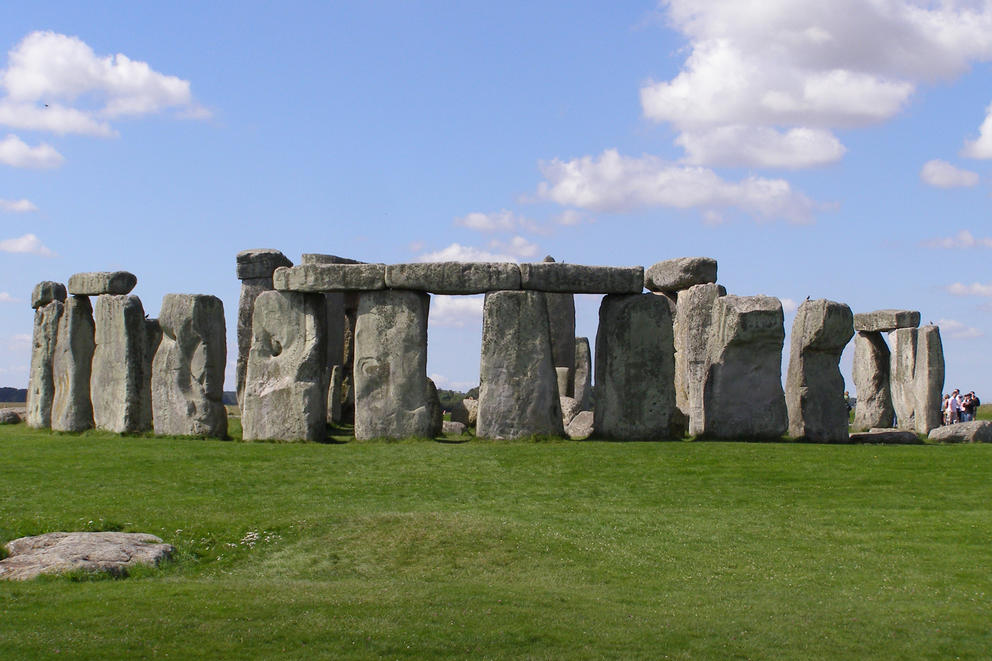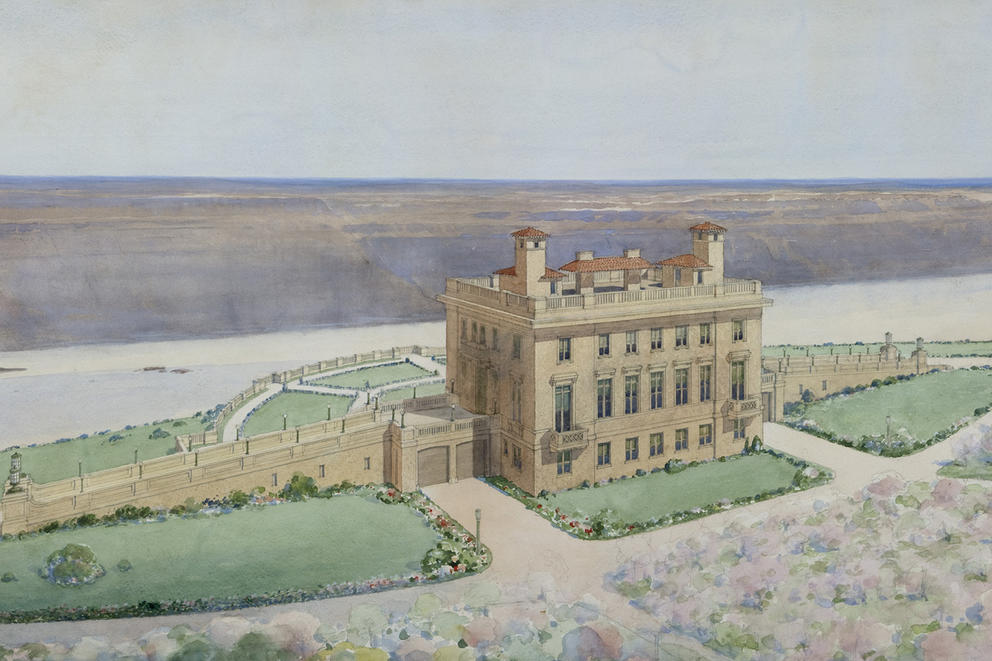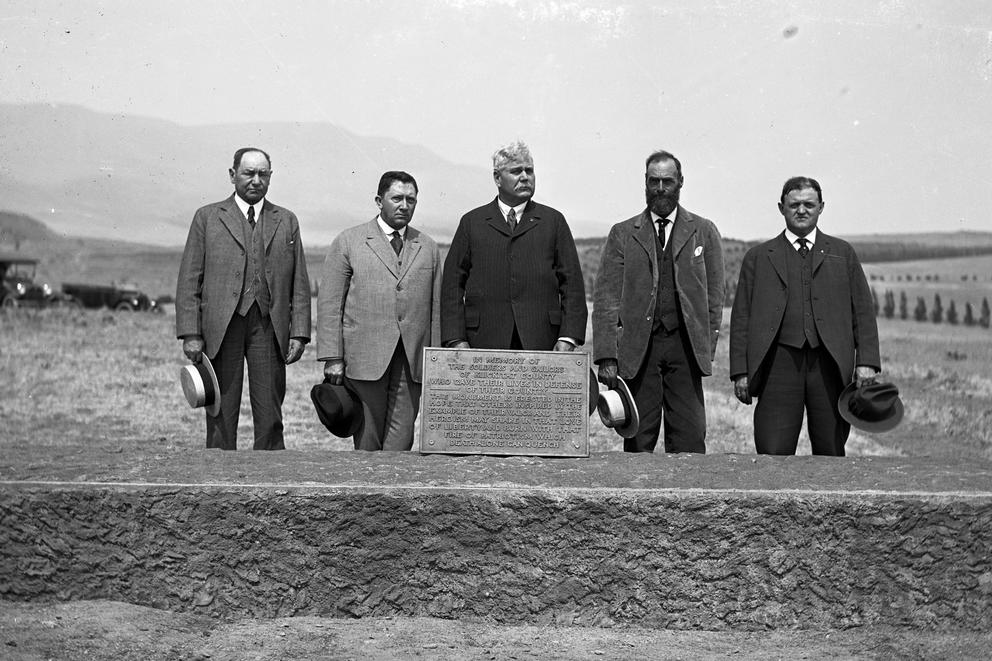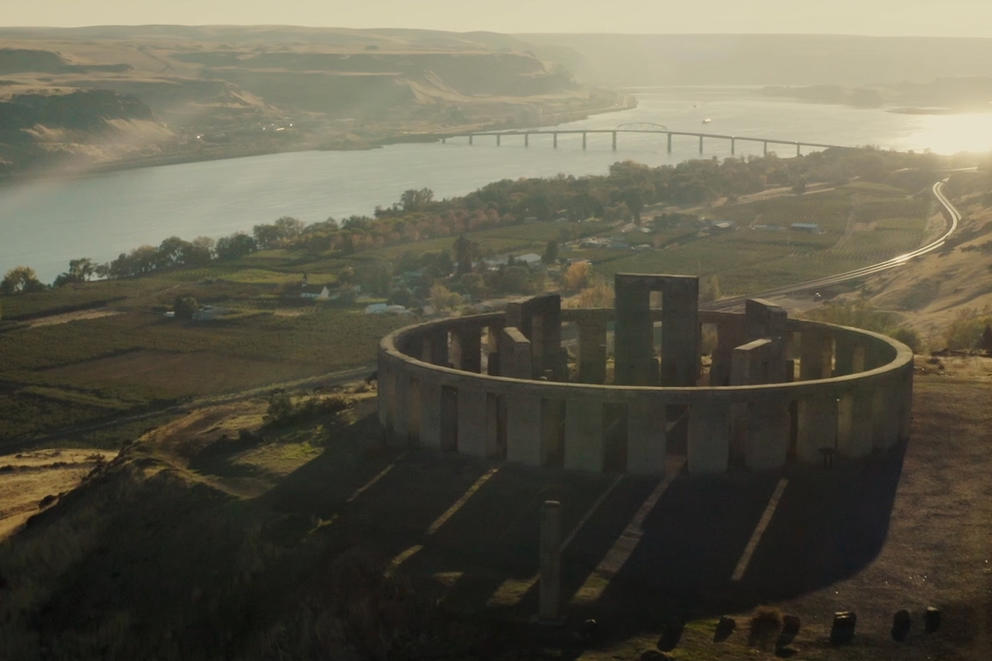The original Stonehenge is a Neolithic circular monument of upright stones on Salisbury Plain in what is now England. Some believe it was a sacred place of the Druids, pagan priests first described by Roman conquerors. It is said to have astronomical significance, aligned for the winter and summer solstices. It was built in stages starting about 5,000 years ago, but still evokes a kind of mystical sense. In the modern world, it has inspired imaginations and imitators all over, many with a whimsical purpose, like Carhenge in Nebraska, a full-size Stonehenge replica made of junked cars.
Future archaeologists might conclude that we once worshipped the automobile, and they’d be right. And one man who was a huge promoter of car-friendly roads was the eccentric millionaire who built his own Stonehenge on the Columbia River near Goldendale, Wash. His name was Sam Hill, and his version of this strange temple is just one concrete example of his passions.
And I mean concrete literally.
Sam Hill was a lawyer, businessman, railroad man, and multimillionaire. He traveled widely, was friends of royalty — he was close to Queen Marie of Romania, for example. James J. Hill — the railroad baron called the Empire Builder who reshaped the Pacific Northwest 150 years ago when his transcontinental line reached Tacoma — was Sam’s father-in-law. Sam Hill was rich, well-connected, and had a vision for the region beyond railroads. He envisioned building a system of paved roads throughout the state. He had this idea before the first horseless carriage was putt-putting on the streets of Seattle.
Hill decided to build a mansion near Goldendale and had hopes of attracting a new Quaker farming community to the then-remote area on the Washington side of the Columbia. Hill had been raised Quaker.
His mansion was built it out of steel-reinforced concrete, unusual for the time. He named it Maryhill for his wife and daughter, though he rarely saw either of them. It wasn’t finished in Hill’s lifetime; he died in 1931. In 1940 it opened to the public as an art museum, as it still is today. Hill’s biographer dubbed him “The Prince of Castle Nowhere.” Most of Hill’s dreams for the area did not materialize.
The Prince was, however, a tireless promoter of roads. He macadamized 10 miles of road near his mansion as a demonstration project. His Maryhill castle had built-in ramps on either side so guests arriving by automobile could drive right into its great hall and out the other side. Accommodating autos was the future!
His advocacy played a major role in Oregon’s construction of the scenic highway that runs along their side of the Columbia. He was a founder of the Washington Good Roads Association, which in turn led to the creation of Washington’s transportation department. The infrastructure for car worship here owes a lot to Sam Hill.
Hill traveled to Europe during World War I and was horrified at the human cost of the conflict. After visiting Stonehenge, he decided to build a replica monument at Maryhill, dedicated to those from Klickitat County who had given their lives in the war. It was inspired in part because of, as one newspaper put it, its “awe-inspiring vagueness.”
Naturally, he decided to build his replica not of stone but of his beloved concrete—more than 2 million pounds of it. He expected his concrete “stones” to last 1,000 years.
His Stonehenge included an “altar stone” like the original on which, it was then believed, Druids sacrificed humans to the gods of war. Hill believed that despite human progress, we were still sacrificing our young to the war gods. On July 4, 1918, before WWI had even ended, the monument’s altar stone was placed and dedicated—thus Maryhill’s Stonehenge is thought to be the first World War I memorial erected in the U.S. It wasn’t finished for another decade.
Modern Druids have adopted the original Stonehenge for ceremonies, but archaeologists have shown that Stonehenge predated the Druids by some 2,500 years, and they were not known to perform ceremonies related to the cycles of the sun. It remains an inspiring enigma, attracting tourists, scientists, historians and crackpots.
In the future, Maryhill’s Stonehenge will likely baffle archaeologists. The nearby hills mean the rising sun cannot cast a shadow to mark the summer solstice as does the original, making it a kind of broken sundial.
Yet it offers us a place to contemplate human loss and the epic history of its beautiful setting. And amid such musings, we can take a minute to appreciate the eccentric millionaire who hoped to speed us up the road of human progress.






